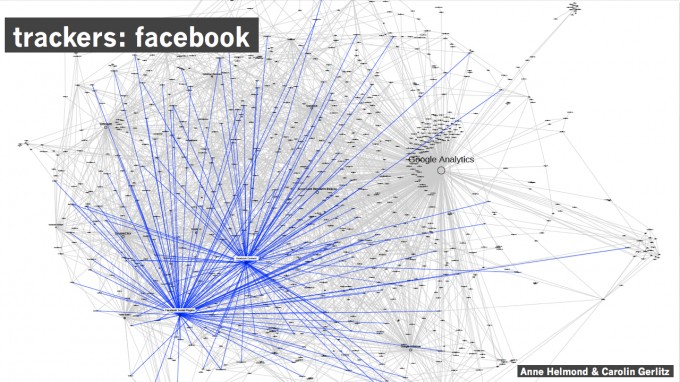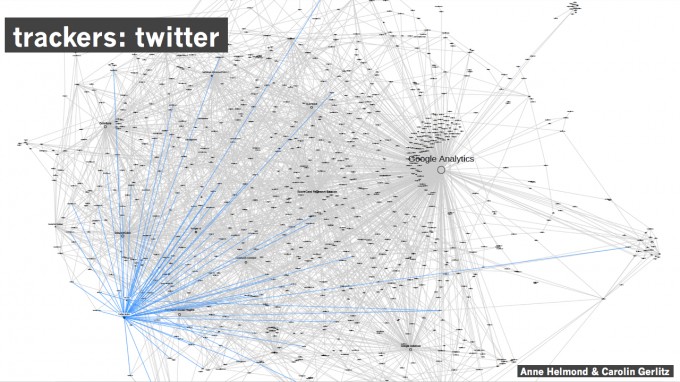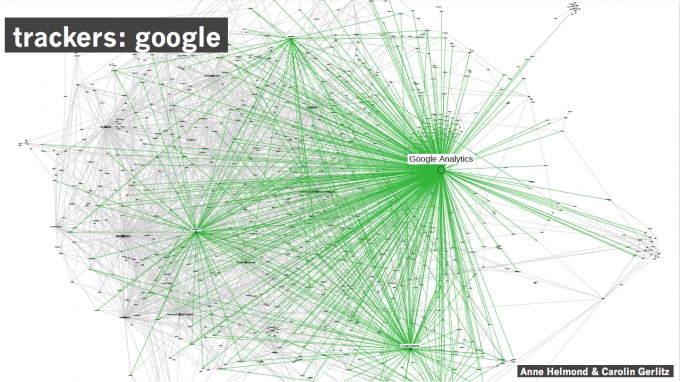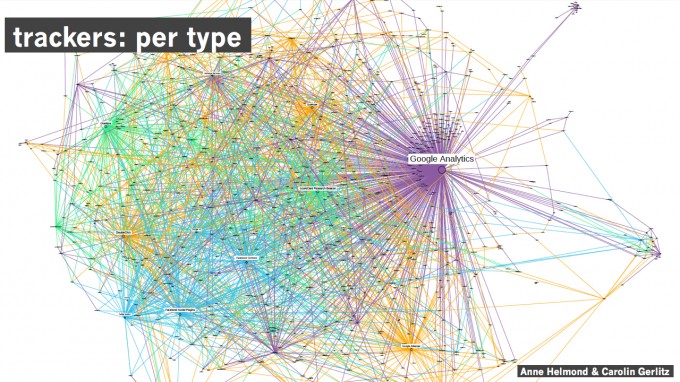On March 9, Carolin Gerlitz and I presented our paper Reworking the fabric of the web: The Like economy at the Unlike Us conference in Amsterdam. We showed the outcome of some empirical work, building on a previous Winterschool project with the Digital Methods Initiative called Track the Trackers. For Unlike Us we visualized the relative presence of Facebook trackers in the top 1000 Alexa as a way to make visible the alternative fabric of the web Facebook is creating. More information about the tool and method to create these maps can be found on the Tracker Tracker tool wiki page.

Click image to enlarge or download full PDF.

Click image to enlarge or download full PDF.
The third map shows Google presence, which is the biggest of all three because Google is an established player in multiple categories with Google Analytics, Google Adsense/Adwords and the Google+ button. Facebook, although not the most dominant player, is still present on 18% of the websites with the most traffic.

Click image to enlarge or download full PDF. Download combined Facebook, Twitter, Google image (not displayed) as PDF.
The following map shows the overall presence of different types of tracking devices and allows us to draw more general conclusions about the organisation of value and the fabric of the web. The presence of analytics, beacons, trackers and ad services create alternative connections, not between websites themselves as enabled by links, but connections to the associated tracking providers either enabled by simply visiting a website or activated by user activities such as liking. What emerges are clusters organised around the key players – Facebook being one of them – that form an alternative fabric of the web, operating in the back-end and enabled by a range of actors, including webmasters, web users and others.

Click image to enlarge or download full PDF.
New media student Lisa van Pappelendam wrote a blog post about our talk at the Unlike Us conference.
Update
The Like Economy has been published! Gerlitz, Carolin and Anne Helmond (2013). ‘The Like economy: Social buttons and the data-intensive web.’ New Media & Society. Online First. [link][pre-peer-review version]
20 thoughts on “Visualizing Facebook’s Alternative Fabric of the Web”